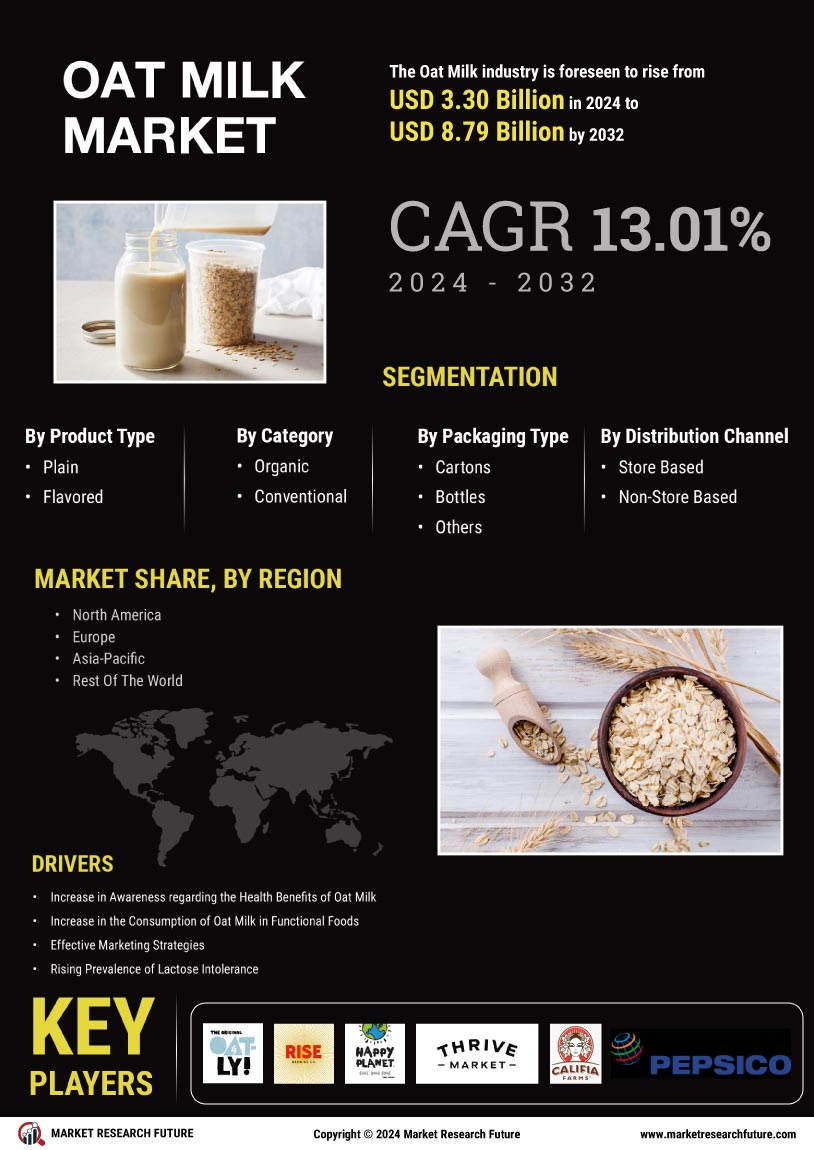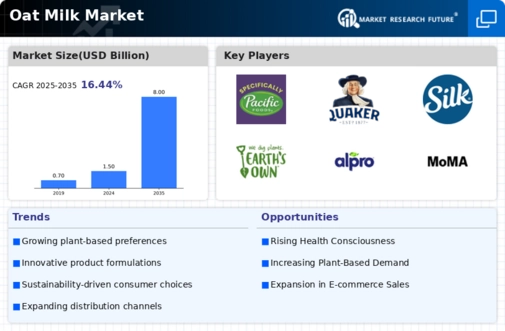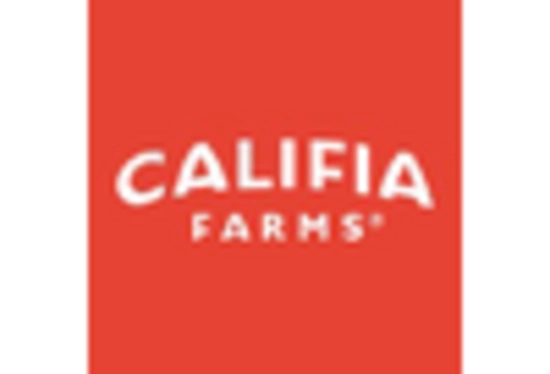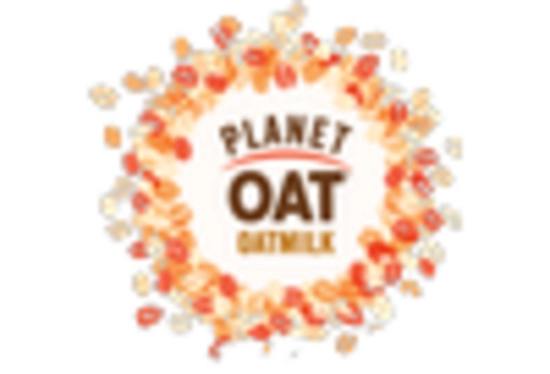Diverse Flavor Profiles
Flavor innovation plays a vital role in the Oat Milk Market, as manufacturers introduce a variety of flavors to cater to diverse consumer preferences. Traditional oat milk is often enhanced with flavors such as vanilla, chocolate, and even seasonal spices, appealing to a broader audience. This diversification not only attracts new customers but also encourages existing consumers to experiment with different products. Market data shows that flavored oat milk products have seen a notable increase in sales, indicating a shift in consumer interest towards more exciting and varied options. The Oat Milk Market is likely to continue evolving as brands innovate to meet the changing tastes of consumers.
Health Benefits of Oat Milk
The increasing awareness of health benefits associated with oat milk is a prominent driver in the Oat Milk Market. Oat milk is often fortified with vitamins and minerals, making it a nutritious alternative to dairy milk. It is naturally low in fat and cholesterol-free, appealing to health-conscious consumers. According to recent data, the consumption of oat milk has surged, with a reported increase of over 30 percent in the last year alone. This trend indicates a shift towards plant-based diets, as consumers seek healthier options. The Oat Milk Market is likely to continue benefiting from this health trend, as more individuals prioritize their well-being and seek alternatives that align with their dietary preferences.
Rise of Veganism and Plant-Based Diets
The rise of veganism and plant-based diets is a significant driver in the Oat Milk Market. As more individuals adopt vegan lifestyles, the demand for plant-based alternatives has surged. Oat milk, being a versatile and nutritious option, has gained popularity among those seeking dairy substitutes. Recent statistics reveal that the plant-based milk segment, including oat milk, is projected to grow at a compound annual growth rate of over 10 percent in the coming years. This trend indicates a shift in consumer behavior, as individuals increasingly seek products that align with their ethical and dietary choices. The Oat Milk Market is poised to benefit from this growing movement towards plant-based living.
Increased Availability in Retail Channels
The increased availability of oat milk in various retail channels is a crucial driver in the Oat Milk Market. Supermarkets, health food stores, and online platforms are expanding their offerings of oat milk products, making them more accessible to consumers. This enhanced distribution network is likely to contribute to the growth of the oat milk segment, as convenience plays a significant role in purchasing decisions. Recent data indicates that oat milk sales have risen sharply in retail settings, reflecting a growing consumer preference for easy access to plant-based alternatives. The Oat Milk Market is expected to continue expanding as more retailers recognize the demand for oat milk and increase their product ranges.
Sustainability and Environmental Concerns
Sustainability is a critical driver in the Oat Milk Market, as consumers become increasingly aware of the environmental impact of their food choices. Oat milk production generally requires less water and land compared to dairy milk, making it a more sustainable option. The carbon footprint associated with oat milk is also significantly lower, which resonates with eco-conscious consumers. Recent studies indicate that the demand for sustainable products has risen sharply, with oat milk being a preferred choice among environmentally aware individuals. This trend suggests that the Oat Milk Market may experience continued growth as sustainability becomes a central theme in consumer purchasing decisions.

















Leave a Comment